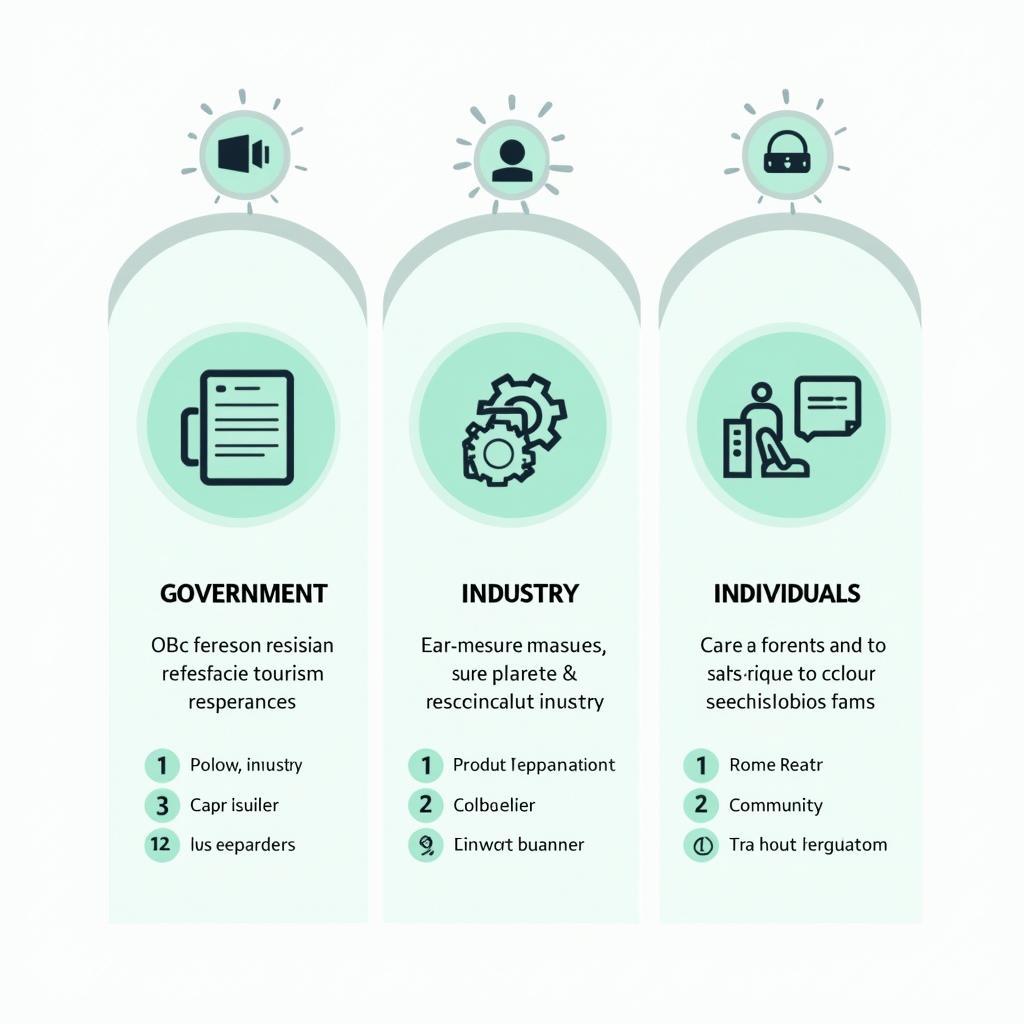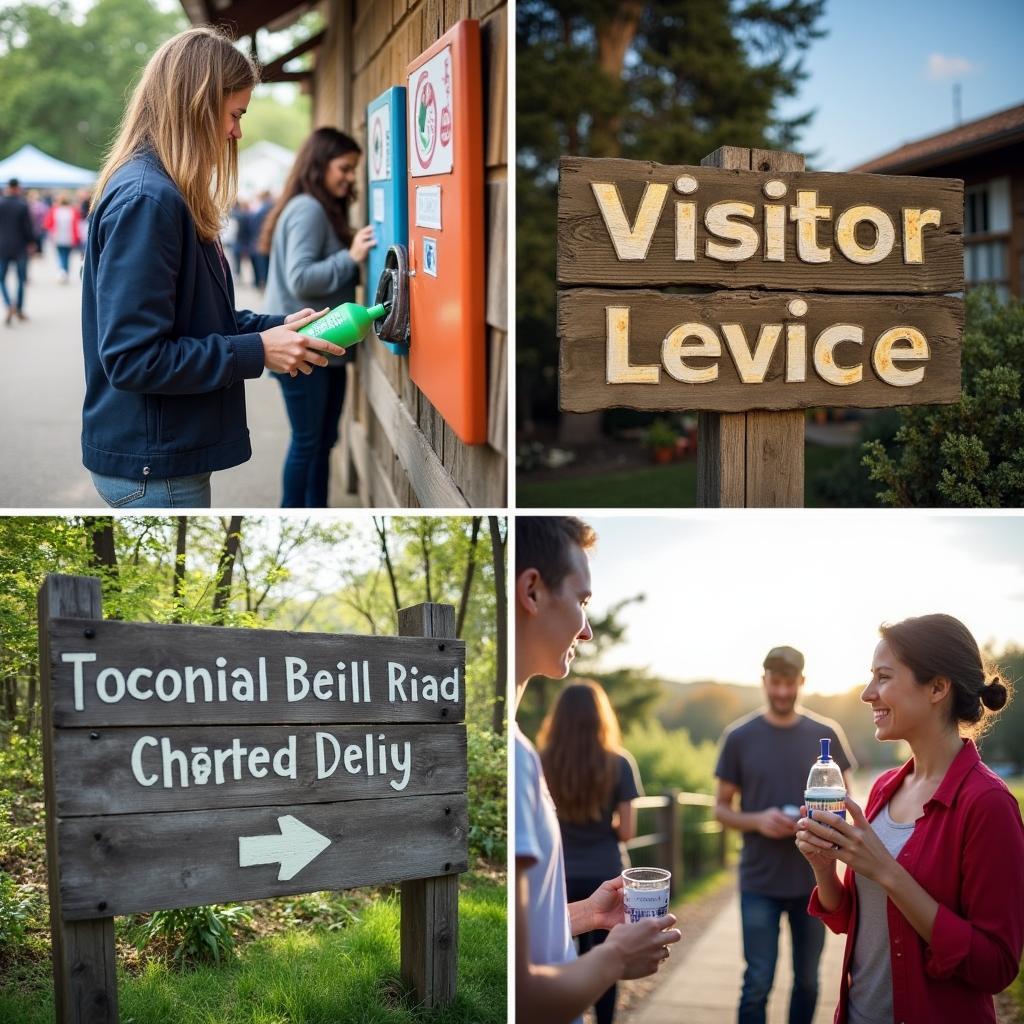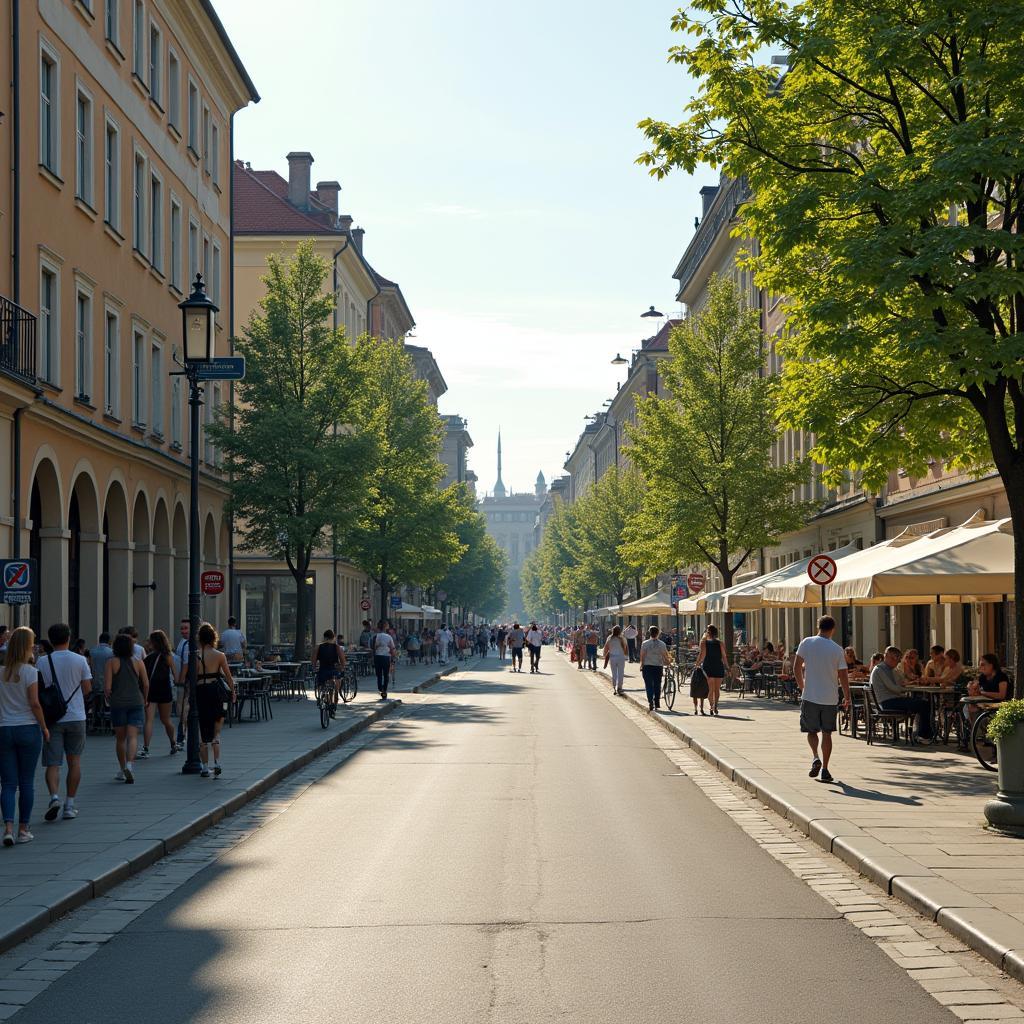Mở bài
Trong 5 năm gần đây, chủ đề du lịch bền vững/trách nhiệm xã hội xuất hiện đều đặn trong IELTS Writing Task 2, nhất là ở các đề về môi trường, văn hóa và kinh tế địa phương. Với từ khóa How To Promote Responsible Tourism, bạn cần thể hiện tư duy giải pháp có cấu trúc, sử dụng ví dụ thực tiễn, và triển khai lập luận thuyết phục. Bài viết này giúp bạn: nắm chiến lược xử lý đề, xem 3 bài mẫu theo dải band 5-6, 6.5-7 và 8-9, phân tích chấm điểm chi tiết, tổng hợp từ vựng chủ đề và 6 cấu trúc câu dễ ăn điểm cao.
Nội dung bài viết
- Mở bài
- 1. Đề Writing Part 2
- 2. Bài mẫu Band 8-9
- Phân tích Band điểm
- Các yếu tố giúp bài này được chấm điểm cao
- 3. Bài mẫu Band 6.5-7
- Phân tích Band điểm
- So sánh với bài Band 8-9
- 4. Bài mẫu Band 5-6
- Phân tích Band điểm
- Những lỗi sai của bài – phân tích & giải thích
- Cách Cải Thiện Từ Band 6 Lên Band 7
- 5. Từ vựng quan trọng cần nhớ
- 6. Cấu trúc câu dễ ăn điểm cao
- 7. Checklist Tự Đánh Giá
- Kết bài
Các đề thi thực tế/liên quan đã được xác thực từ các nguồn uy tín:
- Cambridge IELTS 8, Test 4, Task 2: “Many people believe that international tourism is a bad thing for their country. Why? What can be done to change their negative attitude?”
- IELTS Liz – Tourism Essay Questions (Practice): “International tourism has brought enormous benefits, but there are serious concerns about its impact on local communities and the environment. Discuss both views and give your opinion.”
- British Council – Task 2 (Practice): “International travel has become cheaper and more convenient. Do the advantages outweigh the disadvantages?”
Trong bài, bạn sẽ luyện cách trả lời đúng trọng tâm how to promote responsible tourism với 3 bài mẫu, phân tích band điểm rõ ràng, checklist tự đánh giá và mẹo quản lý thời gian. [internal_link: Cách viết Task 2 Problem–Solution]
1. Đề Writing Part 2
In many destinations, tourism brings economic benefits but also causes environmental and cultural damage. What measures can governments, the tourism industry and individual travellers take to promote responsible tourism?
Dịch đề: Trong nhiều điểm đến, du lịch mang lại lợi ích kinh tế nhưng cũng gây hại cho môi trường và văn hóa. Những biện pháp nào mà chính phủ, ngành du lịch và du khách cá nhân có thể thực hiện để thúc đẩy du lịch có trách nhiệm?
Phân tích đề bài:
- Dạng câu hỏi: Problem–Solution (giải pháp), yêu cầu viết giải pháp theo 3 nhóm đối tượng: government, industry, individuals.
- Thuật ngữ quan trọng:
- Responsible tourism: du lịch có trách nhiệm (giảm tác động xấu, tối đa hóa lợi ích cho cộng đồng).
- Environmental and cultural damage: thiệt hại môi trường và văn hóa (ô nhiễm, quá tải, thương mại hóa bản sắc).
- Lỗi thường gặp:
- Viết lan man về lợi-hại mà không đi vào giải pháp cụ thể.
- Không chia giải pháp theo từng stakeholder (thiếu tổ chức).
- Dùng ví dụ chung chung; thiếu tính khả thi, thiếu liên kết nguyên nhân-biện pháp.
- Cách tiếp cận:
- Mở bài: paraphrase + thesis nêu 3 nhóm giải pháp.
- Thân bài 1: Chính phủ (policy, thuế, hạ tầng, bảo tồn).
- Thân bài 2: Doanh nghiệp (chứng chỉ xanh, chuỗi cung ứng địa phương).
- Thân bài 3: Du khách (lựa chọn phương tiện, ứng xử, đóng góp).
- Kết bài: tổng kết và nhấn mạnh phối hợp đa bên.
 So do y how to promote responsible tourism cho IELTS Writing Task 2
So do y how to promote responsible tourism cho IELTS Writing Task 2
2. Bài mẫu Band 8-9
Bài Band 8-9 thường có: lập luận rõ, ví dụ chọn lọc, từ vựng học thuật đa dạng, cấu trúc câu linh hoạt, và liên kết mạch lạc.
Essay (≈300 words):
Tourism’s economic dividends are undeniable, yet unmanaged growth can erode ecosystems and hollow out local cultures. To promote responsible tourism, action is required from governments, the industry and travellers alike, because no single stakeholder can recalibrate the sector on their own.
Governments should set the regulatory tone. One effective lever is to introduce a visitor levy earmarked for conservation and waste management, as seen in parts of the Mediterranean. In addition, authorities can enforce carrying-capacity limits at fragile sites, deploy timed-entry systems, and incentivise off‑season travel through dynamic pricing. Crucially, zoning and heritage protection laws should prevent the conversion of historic districts into hollow tourist enclaves.
The tourism industry, for its part, must operationalise sustainability rather than merely advertise it. Hotels and tour operators can obtain credible eco‑certifications, audit their supply chains to prioritise local producers, and publish transparent carbon accounts with realistic reduction targets. Technology can also help: platforms can nudge users towards low‑impact itineraries and cap bookings in over‑visited hotspots. Staff training in cultural sensitivity ensures that revenue does not come at the expense of community dignity.
Finally, travellers are not powerless. They can choose rail over short‑haul flights where feasible, support community‑based tourism, minimise plastic use, and observe a code of conduct that respects local customs. While carbon offsetting is imperfect, it can complement genuine emission cuts.
In sum, responsible tourism emerges when policy, practice and personal choices align. If governments set guardrails, companies integrate sustainability into their core operations, and visitors act with humility and restraint, destinations can welcome guests without compromising the very assets that make them worth visiting.
Phân tích Band điểm
| Tiêu chí | Band | Nhận xét |
|---|---|---|
| Task Response (Hoàn thành yêu cầu) | 8.5 | Trả lời trực tiếp câu hỏi “what measures” cho 3 nhóm; luận điểm cân bằng, có ví dụ khả thi (visitor levy, carrying capacity, eco-certifications). Kết luận nhất quán. |
| Coherence & Cohesion (Mạch lạc & Liên kết) | 8.0 | Bố cục rõ: mỗi đoạn cho một stakeholder. Dùng từ nối logic và lặp ý kiểm soát (“policy, practice, personal”). Có sự tiến triển lập luận mượt mà. |
| Lexical Resource (Từ vựng) | 8.5 | Từ vựng học thuật chính xác: carrying capacity, dynamic pricing, carbon accounts, community-based tourism, code of conduct. Collocations tự nhiên, hầu như không lỗi từ vựng. |
| Grammatical Range & Accuracy (Ngữ pháp) | 8.0 | Đa dạng cấu trúc: mệnh đề quan hệ, đảo ngữ nhẹ, danh động từ, mệnh đề điều kiện ẩn. Độ chính xác cao, không lỗi đáng kể. |
Các yếu tố giúp bài này được chấm điểm cao
- Trả lời đúng trọng tâm how to promote responsible tourism, chia theo stakeholder rõ ràng.
- Dẫn chứng cụ thể và có tính khả thi (levy, timed-entry, eco‑certification).
- Collocations chuẩn xác: operationalise sustainability, audit supply chains, cultural sensitivity training.
- Cấu trúc câu đa dạng, có nhịp điệu lập luận, không lạm dụng từ nối.
- Tư duy phản biện: thừa nhận giới hạn của offsetting nhưng đề xuất cách dùng hợp lý.
- Kết luận “align policy, practice, personal choices” khép ý chặt chẽ, giàu tính tổng hợp.
3. Bài mẫu Band 6.5-7
Đặc điểm: triển khai đủ ý, ví dụ quen thuộc, từ vựng khá, nhưng còn khái quát ở vài điểm và câu chưa thật tinh tế.
Essay (≈260 words):
Tourism helps local economies by creating jobs and attracting investment, but it can also damage nature and local traditions. To promote responsible tourism, governments, companies and travellers should all take action.
First, governments can control the flow of visitors and use tax to protect the environment. For example, they could set a small entrance fee at crowded heritage sites and spend this money on cleaning and conservation. They can also improve public transport so that visitors do not rely on cars, and encourage people to visit lesser-known areas in the low season.
Second, the tourism industry needs to move beyond marketing slogans. Hotels and tour operators should reduce waste, save water and electricity, and support local suppliers instead of importing everything. They can also train staff to explain local customs, so tourists understand how to behave respectfully. Online platforms can show warnings when a place is overcrowded and suggest alternative routes.
Finally, travellers themselves must behave responsibly. They can choose trains or buses for short distances, bring reusable bottles, and avoid activities that exploit wildlife or disrespect culture. When possible, tourists should stay in homestays or join community tours, because this keeps money in the local economy.
To conclude, responsible tourism is achievable if each group plays its role: governments set rules, businesses apply sustainable practices, and travellers make conscious choices. When these efforts come together, destinations will remain attractive for future generations.
Phân tích Band điểm
| Tiêu chí | Band | Nhận xét |
|---|---|---|
| Task Response (Hoàn thành yêu cầu) | 7.0 | Trả lời đầy đủ ba nhóm đối tượng, có ví dụ cơ bản (entrance fee, public transport). Một số ý còn chung chung. |
| Coherence & Cohesion (Mạch lạc & Liên kết) | 7.0 | Chia đoạn rõ, từ nối phù hợp. Liên kết trong đoạn khá tốt nhưng thiếu các câu chủ đề tinh tế. |
| Lexical Resource (Từ vựng) | 6.5 | Từ vựng đủ dùng: entrance fee, low season, reusable. Thiếu các collocations nâng cao; ít biến hóa từ đồng nghĩa. |
| Grammatical Range & Accuracy (Ngữ pháp) | 6.5 | Câu đơn/câu phức cơ bản chính xác. Ít cấu trúc nâng cao; một vài câu có thể rút gọn để súc tích hơn. |
So sánh với bài Band 8-9
- Ví dụ của Band 8-9 cụ thể và “thực thi được” (timed-entry, carbon accounts), trong khi bài 6.5-7 nghiêng về mô tả chung (reduce waste, save water).
- Vốn từ học thuật của Band 8-9 đa dạng và tinh tế; bài 6.5-7 dùng từ phổ thông nên an toàn nhưng ít ấn tượng.
- Tổ chức luận điểm của Band 8-9 có tính khái quát – cụ thể – kết nối, kết luận mang tính tổng hợp cao hơn.
4. Bài mẫu Band 5-6
Đặc điểm: ý tưởng có nhưng phát triển chưa sâu, lặp ý, lỗi ngữ pháp/từ vựng phổ biến, ví dụ mơ hồ.
Essay (≈255 words):
Tourism is good for jobs, but it also brings many problems to places. To promote responsible tourism, everyone should try, but the government need to do more.
Firstly, the government can make rules. They can ban people to go to some places when there are too many. They also should collect a tax for tourist and use it for cleaning the city and beach. However, many countries do not do it because they think it is bad for business, so this is not really possible.
Secondly, companies must act. Hotels can say they are green, but sometimes it is only marketing. They should use less plastics and buy local food. Tour agencies can tell visitors about culture and ask them not to make noise at night. This is very good and also nice for local people.
Finally, tourists also have responsibility. They can take bus instead of car, and they can bring bottle for many times. They should not touch old buildings or feed animals. If tourist do this things, everything will be perfect and there will be no problems anymore.
In conclusion, I think responsible tourism is important. Government, companies and travellers should work together, but it is difficult to change because people don’t like many rules.
Phân tích Band điểm
| Tiêu chí | Band | Nhận xét |
|---|---|---|
| Task Response (Hoàn thành yêu cầu) | 5.5 | Có trả lời đủ 3 nhóm, nhưng phát triển hời hợt, có khẳng định cực đoan và thiếu bằng chứng. |
| Coherence & Cohesion (Mạch lạc & Liên kết) | 5.5 | Có mở-thân-kết, nhưng lặp ý, từ nối đơn giản, một số câu thiếu liên kết logic. |
| Lexical Resource (Từ vựng) | 5.5 | Từ vựng giới hạn, collocations chưa tự nhiên, lạm dụng từ chung chung (good, problems). Có lỗi dùng số ít/số nhiều. |
| Grammatical Range & Accuracy (Ngữ pháp) | 5.0 | Lỗi S-V agreement, mạo từ, giới từ; cấu trúc câu đơn giản, có câu không chuẩn. |
Những lỗi sai của bài – phân tích & giải thích
| Lỗi sai | Loại lỗi | Sửa lại | Giải thích |
|---|---|---|---|
| the government need | S-V agreement | the government needs | Chủ ngữ số ít (the government) cần động từ số ít. |
| ban people to go | Cấu trúc động từ | ban people from going | “Ban someone from doing something” mới đúng. |
| collect a tax for tourist | Mạo từ/số nhiều | collect a tourist tax / collect taxes from tourists | Dùng cụm danh từ đúng hoặc giới từ phù hợp. |
| use less plastics | Danh từ không đếm được | use less plastic | “Plastic” không đếm được. |
| This is very good and also nice | Từ vựng mơ hồ | This is beneficial for local residents | Tránh “good/nice”, dùng học thuật rõ nghĩa. |
| If tourist do this things | Số ít/số nhiều | If tourists do these things | Số nhiều ở cả danh từ và đại từ chỉ định. |
| no problems anymore | Quá tuyệt đối | reduce many problems significantly | Tránh khẳng định tuyệt đối, thiếu thực tế. |
| it is difficult… people don’t like many rules | Lý do yếu/khái quát | change is challenging because poorly designed rules may hurt small businesses | Lý giải cụ thể, thuyết phục hơn. |
Cách Cải Thiện Từ Band 6 Lên Band 7
- Tập trung phát triển 2-3 giải pháp có chiều sâu, kèm ví dụ thực thi (ví dụ: timed-entry ở bảo tàng, visitor levy dùng cho rác thải).
- Nâng cấp từ vựng: thay “good/bad” bằng “beneficial/harmful”, “enforce, incentivise, mitigate”.
- Sửa lỗi cơ bản: mạo từ a/an/the, số ít/số nhiều, giới từ. Luyện cụm động từ cố định (ban from doing, invest in, rely on).
- Đa dạng cấu trúc câu: thêm mệnh đề quan hệ, cụm phân từ, câu điều kiện thực tế.
- Kết luận có tính tổng hợp, tránh tuyệt đối hóa.
 Vi du cu the how to promote responsible tourism cho bai mau IELTS
Vi du cu the how to promote responsible tourism cho bai mau IELTS
5. Từ vựng quan trọng cần nhớ
| Từ/Cụm từ | Loại từ | Phiên âm | Nghĩa | Ví dụ | Collocations |
|---|---|---|---|---|---|
| responsible tourism | n. | rɪˈspɒnsəbl ˈtʊərɪzəm | du lịch có trách nhiệm | Responsible tourism balances profit and protection. | promote/advance responsible tourism |
| sustainable travel | n. | səˈsteɪnəbl ˈtrævəl | du lịch bền vững | Sustainable travel requires long-term planning. | sustainable travel practices |
| carrying capacity | n. | ˈkæriɪŋ kəˈpæsəti | sức chứa sinh thái | Parks must respect carrying capacity. | set/enforce carrying capacity |
| visitor levy | n. | ˈvɪzɪtə ˈlɛvi | phí du khách | A visitor levy funds conservation. | introduce/earmark a visitor levy |
| community-based tourism | n. | kəˈmjuːnɪti beɪst ˈtʊərɪzəm | du lịch dựa vào cộng đồng | Community-based tourism empowers locals. | support/engage in community-based tourism |
| heritage conservation | n. | ˈhɛrɪtɪdʒ ˌkɒnsəˈveɪʃn | bảo tồn di sản | Heritage conservation prevents over-renovation. | invest in heritage conservation |
| greenwashing | n. | ˈgriːnwɒʃɪŋ | tô xanh (giả tạo) | Tourists should watch out for greenwashing. | detect/avoid greenwashing |
| code of conduct | n. | kəʊd əv ˈkɒndʌkt | quy tắc ứng xử | A code of conduct guides visitors. | adopt/observe a code of conduct |
| carbon offset | n./v. | ˈkɑːbən ˈɒfset | bù đắp carbon | Offsetting should complement cuts. | purchase/provide carbon offsets |
| incentivise | v. | ɪnˈsɛntɪvaɪz | tạo động lực | Pricing can incentivise off‑peak travel. | incentivise behaviour/change |
| mitigate | v. | ˈmɪtɪgeɪt | giảm thiểu | Measures mitigate overtourism. | mitigate impact/risk |
| stakeholder | n. | ˈsteɪkˌhəʊldə | bên liên quan | Stakeholders must cooperate. | engage stakeholders |
| overtourism | n. | ˌəʊvəˈtʊərɪzəm | quá tải du lịch | Overtourism harms local life. | tackle/curb overtourism |
| by the same token | phrase | — | cũng vì lẽ đó | By the same token, limits are needed. | cohesive connector |
| not only…but also | phrase | — | không chỉ… mà còn | Not only governments but also firms must act. | correlative conjunction |
Gợi ý học: chú ý phát âm trọng âm danh từ ghép (community-based tourism), tránh “s” thừa ở danh từ không đếm được (plastic).
6. Cấu trúc câu dễ ăn điểm cao
- Câu phức với mệnh đề phụ thuộc
- Công thức: Mệnh đề chính + because/although/while/if + mệnh đề phụ.
- Ví dụ từ bài Band 8-9: “To promote responsible tourism, action is required from governments, the industry and travellers alike, because no single stakeholder can recalibrate the sector on their own.”
- Vì sao ghi điểm: Nêu quan hệ nhân-quả rõ, diễn đạt sắc sảo.
- Ví dụ bổ sung:
- Although visitor levies are unpopular, they ensure stable funding.
- If capacities are enforced, ecosystems can recover.
- Lỗi thường gặp: thiếu dấu phẩy đúng chỗ, dùng “because of” với mệnh đề.
- Mệnh đề quan hệ không xác định (non-defining relative clause)
- Công thức: Danh từ, which/who + mệnh đề bổ sung, mệnh đề chính.
- Ví dụ: “offsetting, which is imperfect, can complement genuine emission cuts.”
- Điểm mạnh: Bổ sung thông tin tinh tế, tăng tính học thuật.
- Ví dụ: Homestays, which keep revenue local, deserve support.
- Lỗi: Quên dấu phẩy, dùng “that” thay “which” trong mệnh đề không xác định.
- Cụm phân từ (participial phrase)
- Công thức: V-ing/V-ed + bổ ngữ, mệnh đề chính.
- Ví dụ: “Deploying timed-entry systems, authorities can prevent overcrowding.”
- Điểm mạnh: Câu gọn, nhịp mạch.
- Ví dụ: Prioritising local suppliers, hotels reduce leakage. Informed by data, cities plan better.
- Lỗi: Treo chủ ngữ (dangling participle).
- Câu chẻ (Cleft sentences)
- Công thức: It is/was + thành phần nhấn mạnh + that/who + mệnh đề.
- Ví dụ: “It is policy, practice and personal choices that must align.”
- Điểm mạnh: Nhấn ý chiến lược.
- Ví dụ: It is government enforcement that turns plans into outcomes.
- Lỗi: Lạm dụng gây nặng nề.
- Câu điều kiện nâng cao
- Công thức: If/Unless/Provided that/Should + S + V, …
- Ví dụ: “If governments set guardrails, companies integrate sustainability, and visitors act with restraint, destinations can thrive.”
- Điểm mạnh: Trình bày điều kiện đa vế, logic.
- Ví dụ: Provided that levies are earmarked, public support may grow. Should demand spike, caps are necessary.
- Lỗi: Sai thì động từ, nhầm điều kiện loại.
- Đảo ngữ
- Công thức: Only by/Not until/Never + trợ động + S + V.
- Ví dụ: “Only by aligning incentives will destinations avoid overtourism.”
- Điểm mạnh: Nhấn mạnh, nâng band ngữ pháp.
- Ví dụ: Never has sustainability been more urgent. Not until limits were imposed did numbers fall.
- Lỗi: Sai trật tự trợ động và chủ ngữ.
[internal_link: Mở rộng cấu trúc câu nâng điểm Task 2]
7. Checklist Tự Đánh Giá
- Trước khi viết:
- Xác định dạng câu hỏi (Problem–Solution) và phạm vi: 3 stakeholder.
- Lập dàn ý 3 mục: Government – Industry – Individuals; mỗi mục 2 giải pháp + ví dụ.
- Chọn 6–8 từ vựng chủ đề để dùng.
- Trong khi viết:
- Câu chủ đề rõ ràng cho mỗi đoạn.
- Mỗi giải pháp kèm “how it works” + “why it helps”.
- Dùng 2–3 cấu trúc câu nâng cao một cách tự nhiên.
- Sau khi viết:
- Soát lỗi mạo từ, số ít/số nhiều, giới từ.
- Kiểm tra mạch logic giữa các đoạn (từ nối, lặp trọng tâm).
- Đếm từ (250–320), đảm bảo kết luận tổng hợp.
- Mẹo quản lý thời gian:
- 5 phút phân tích đề + lập dàn ý.
- 25 phút viết 4 đoạn.
- 5 phút soát lỗi.
- Đặt đồng hồ để kỷ luật bản thân.
Kết bài
Chủ đề how to promote responsible tourism là “mỏ điểm” cho những bạn biết chia bố cục theo stakeholder, dùng ví dụ khả thi và triển khai giải pháp có cơ chế vận hành rõ ràng. Lộ trình cải thiện: viết lại dàn ý theo khung Government–Industry–Individuals, học 15 từ vựng chủ đề và 6 cấu trúc câu trong bài, rồi luyện một bài/time 40 phút và nhờ bạn học hoặc giáo viên phản hồi. Với 2–3 bài chất lượng mỗi tuần, bạn có thể lên một band điểm Task 2 trong 6–8 tuần.
Hãy viết thử một bài về responsible tourism theo dàn ý trên và chia sẻ trong bình luận để mình góp ý. Tài nguyên bổ sung: [internal_link: Từ vựng IELTS chủ đề Môi trường], [internal_link: Mẹo viết Task 2 Problem–Solution], [internal_link: Bài mẫu IELTS Writing Task 2 theo chủ đề]. Chúc bạn ôn luyện hiệu quả và tự tin chinh phục band điểm mục tiêu.


